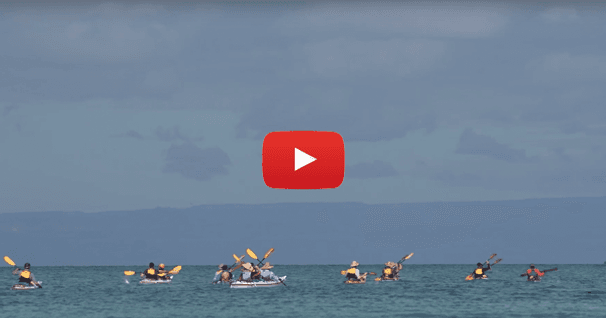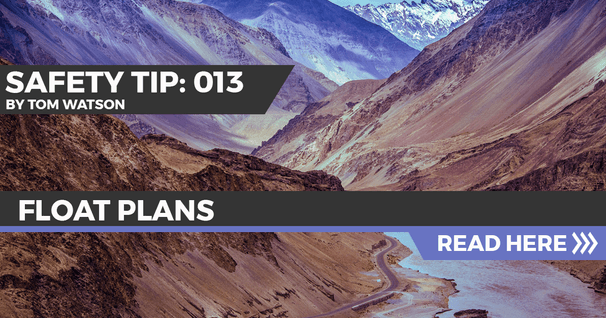We Can't Paddle Forever
Stuff happens as we age, and it’s not all good. Darrell Foss, 75, one of my closest friends, has Alzheimer’s disease. Darrell has lived with this disease for about five years now and he’s done everything possible (medication, memory clinics, mental exercises, etc.) to slow it down. He’s been persistent in pursuing every possible light in the tunnel. He has made considerable progress, so much so that his closest friends have trouble believing that anything (other than getting old) is wrong with him. Most of the time, he remembers things better than us!
Darrell and I have known each other for nearly 50 years, and with rare exception, we have canoed somewhere together every year. We’ve built dozens of wood-strip canoes together, mostly solo models. Around 1980, Darrell designed a 14.5-foot model dubbed the “DF Solo”, which became a Canoe Magazine recommended U-build it project. Shortly afterward, Darrell, Bob Brown and I redesigned the DF and sold it to Mad River. They named it “Lady Slipper” after the beautiful Minnesota state orchid. Early sales were mostly to women so Mad River changed the name to “Slipper” hoping the boat would earn wider appeal. The little “Slipper” became immensely popular, and despite newer, more sophisticated designs, it is still a good choice—if you can find one!
For decades, Darrell Foss, adventure-writer Larry Rice and I, have paddled one or more rivers together each year—naturally, in the small solo canoes we cherish. We’ve canoed the Green, San Juan (a dicey run in these little boats), Missouri, Rio Grande and more. The RioGrande is our all-time favorite: we’ve done it twice (Feb. 2011 and 2015/220 miles). The river offers solitude, exquisite beauty, remoteness, impeccable camping, challenging rapids (lots of them!) and a unique social experience (you’ll meet Mexican ranchers along the way), and a pleasant respite from the winter ice-box in Wisconsin where I live. We love this river so much that this year (2018) we decided to do it again.
We put in at Lajitas and for the first two hours we floated silently along in a gentle current and bright sunlight. Then, came a “slightly dicey” Class II rapid. Larry and I were paddling Northstar “Phoenix” solo canoes with full spray covers. Darrell had his ancient but sturdy “Slipper”, also covered. Larry ran first, I a dozen canoe lengths behind. Darrell followed last. The rapid ended quickly and I eddied in on a gravel beach near Larry. We looked back—no Darrell. Then we saw it: Darrell was waist deep in water and his yellow “Slipper” was pinned, belly up, on a boulder. It looked like it would break in half at any moment.
It took about 30 minutes to rescue Darrell, his boat and gear. The “Slipper” suffered serious damage (delaminated Kevlar in the side-walls) but luckily it didn’t leak. However, much of Darrell’s gear was wet, which came as a surprise because he was very meticulous about packing. The large waterproof dry bag in his pack was reliably watertight if properly sealed. The problem was, it “wasn’t”. This was not Darrell’s MO.
Darrell was visibly shaken—as is everyone who has just capsized—so we expressed no deep concern. Yes, it was just a Class II, but it was a bit edgy. We reasoned that a capsize here could have happened to any of us, so we just smiled and continued on.
Day two: Ahead was a tight left bend with a strong current that threatened to slam you into a cliff. Larry, in the lead, was beached ashore on the inside bend. I followed suit and ferried in behind him. Darrell came third, but instead of following suit, he just kept going as if he didn’t register what was ahead. We yelled and motioned him to “ferry in” but he acted like he didn’t know what to do. Then, capsize and another rescue.
Two upsets in two days. This wasn’t like our friend at all. Heck, Darrell did the San Juan River with us in his little “Slipper” and he had no problems at all. And many of the waves on that river flooded over his boat! By comparison, the small rapid, in which he had just capsized, was nothing. We rescued Darrell, boat and gear without incident. Fortunately, the canoe wasn’t damaged. Darrell changed clothes again, but now he was pretty freaked out, though he was trying hard to hide it.
An hour later we were threading our way through Santa Elena canyon. There are no rapids here, just determined current and high rock walls. Still, one needs to stay alert. About a mile past a dicey constriction known as “Rock Slide”, Darrell capsized again, this time on a sweeping bend with slight current. Another rescue! Larry and I looked knowingly at one another. Something wasn’t right.
When Darrell had dried out we had a pow-wow. We shared our concern, honestly.
“I guess I just can’t do this anymore; I kinda freeze up in rapids, not sure what to do,” said Darrell.
Then he suggested that we drop him off at the public landing below Santa Elena canyon (three miles away), then continue on without him to Rio Grande Village (five days away), our original end point.
“No way!” We replied, in unison. “We stop where you stop. We stick together. Period! No debate.”
Darrell was really down, blaming himself that we had to abort the trip. But Larry and I were upbeat. We said we were thrilled to make this last trip with him—that the end will eventually come to us all—and that lucky is the paddler who makes his last trip with friends, real friends whose allegiance is first to one another, then to the wilderness experience. We emphasized that we do these rivers more to be together than for the challenges they offer. A canoe trip is a canoe trip, but friends—like love—are forever!
Shortly after Darrell’s last capsize, we found a beautiful campsite in the canyon. We stayed two days, ate well, drank hot buttered rum, took photographs and shared the beauty and wonder of the canyon and our last canoe trip together. Yes, it was a long drive from Viking-land to Texas. But we had a ball and we wouldn’t have missed it for a minute.
Consider yourself lucky if your last canoe trip will be with good friends who care about you!
Like this article? Read Cliff Jacobson's "How to Paddle Into Old Age"
~Get the BWCAW Tee~
With over 1,090,000 acres of wilderness area, the BWCAW is a paddler's paradise.
Related Articles
Antonio De La Rosa, a 50 year old Spaniard, left the San Francisco Harbor on June 9th to start the 2,900…
Whenever you're paddling, there's safety in numbers and so it's generally not a good idea to paddle…
What an itinerary is to a traveler, a “Float Plan” is to a paddler embarking on an extended kayak…




